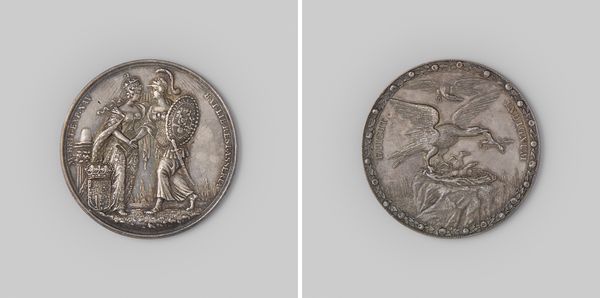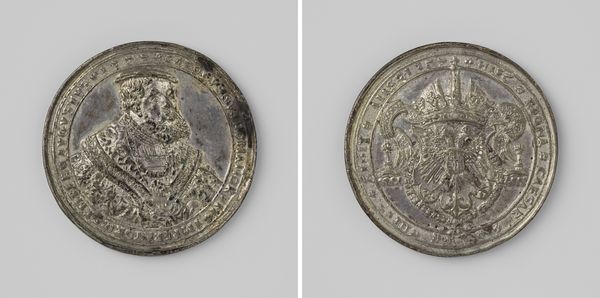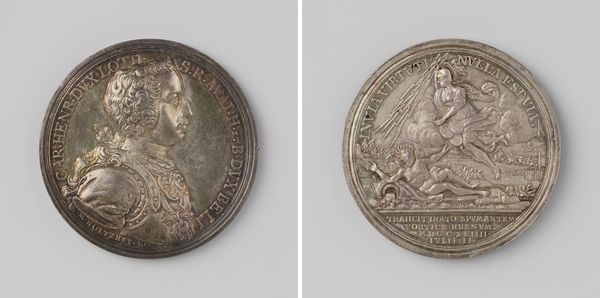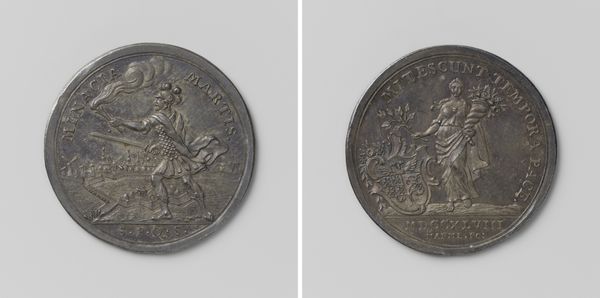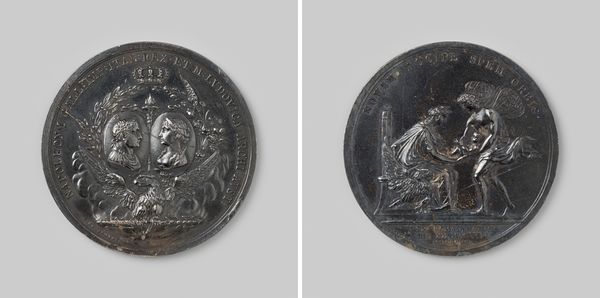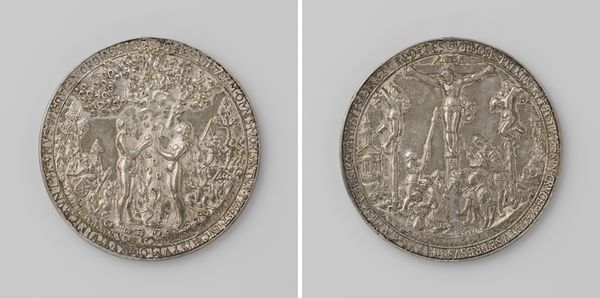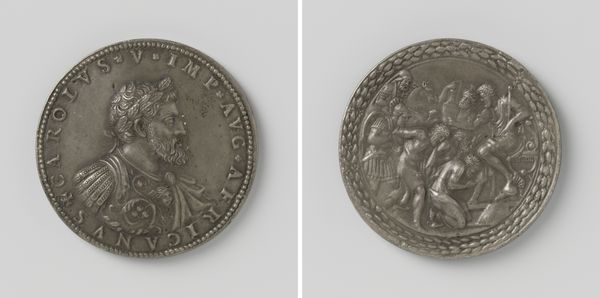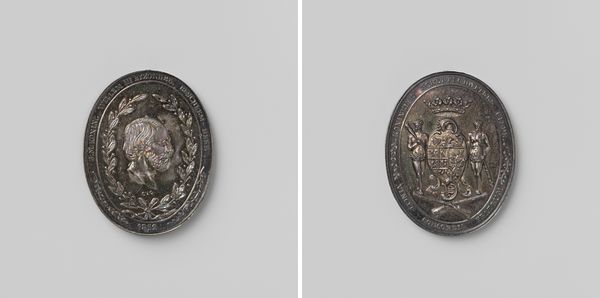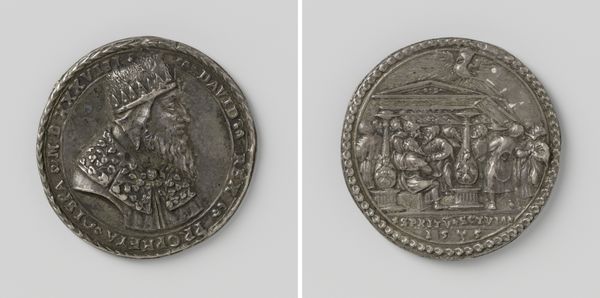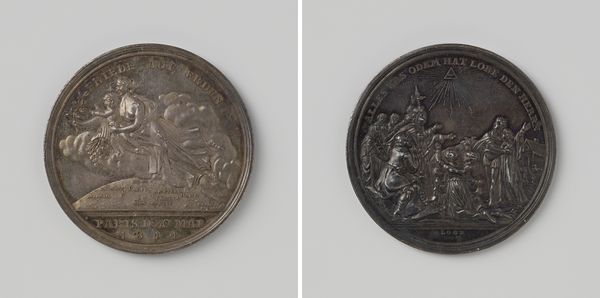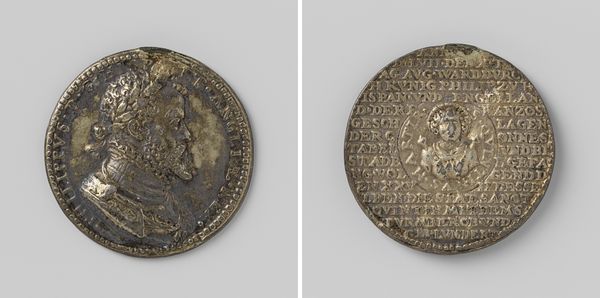
Dimensions: diameter 4.5 cm, weight 26.12 gr
Copyright: Rijks Museum: Open Domain
Editor: This is a metal sculpture from 1537, a portrait of Martin Luther. It’s striking how such detail could be captured on a small, circular surface. I am particularly interested in the inscription and symbolic objects used on this object. What strikes you most about its construction? Curator: What I find most compelling is the masterful articulation of form and symbolic elements within such a confined space. Observe how the artist uses varying relief depths to create a sense of perspective, effectively separating the background inscription from the central figure. The interplay between line and volume directs the viewer's gaze. Editor: Can you expand on how these compositional decisions might impact how we experience the piece? Curator: Certainly. Notice the circular format – the image and text are embedded within it. The way the artist works within this strict framework shows complete mastery of material to give an intense immediacy to both sides of the piece. Note too that this framework does not exist independently but is connected to, built from, and part of both faces. Editor: Fascinating. Is it possible to consider the composition apart from its historical significance? Curator: The objectness is what grabs you at first viewing. But the cultural symbolism—religious representation versus a decorative element on the flip side – offers insight to German expressionism by linking abstract forms with identifiable icons from their culture during the Renaissance. It helps highlight the context in which it was made. Editor: That gives me much to think about. Thanks! Curator: An excellent way to synthesize our discussion. Thank you.
Comments
No comments
Be the first to comment and join the conversation on the ultimate creative platform.

